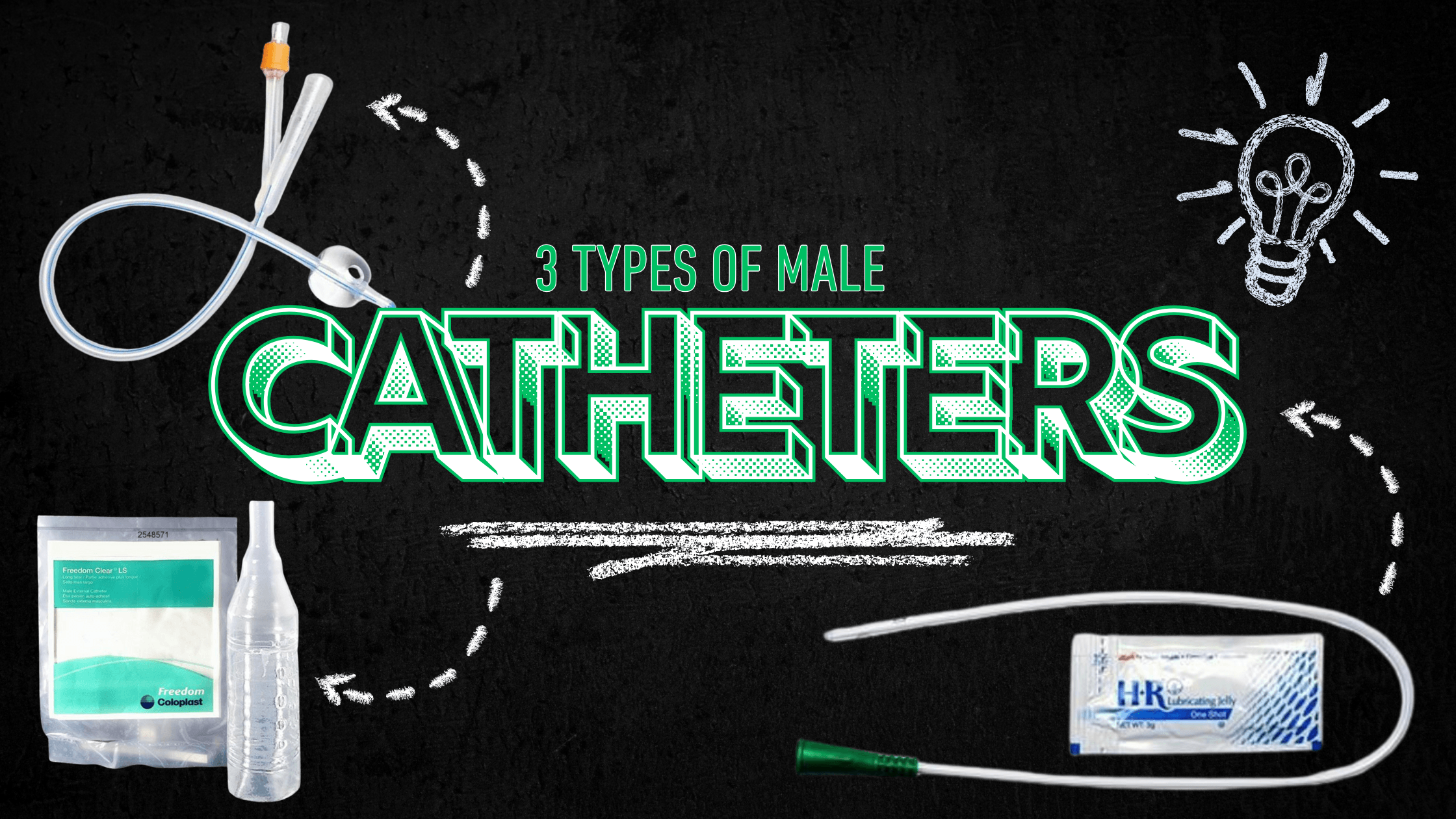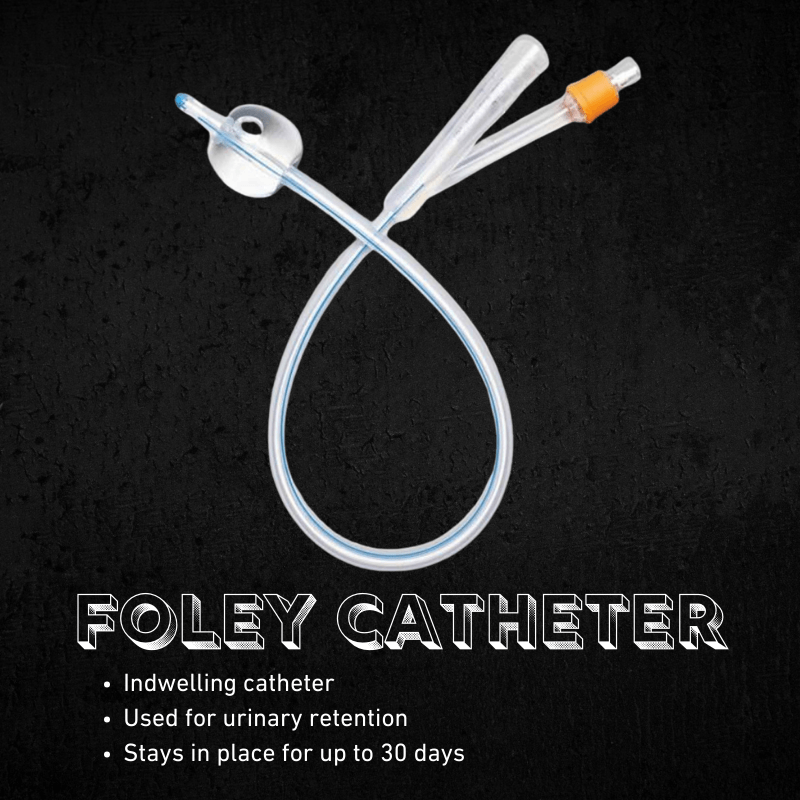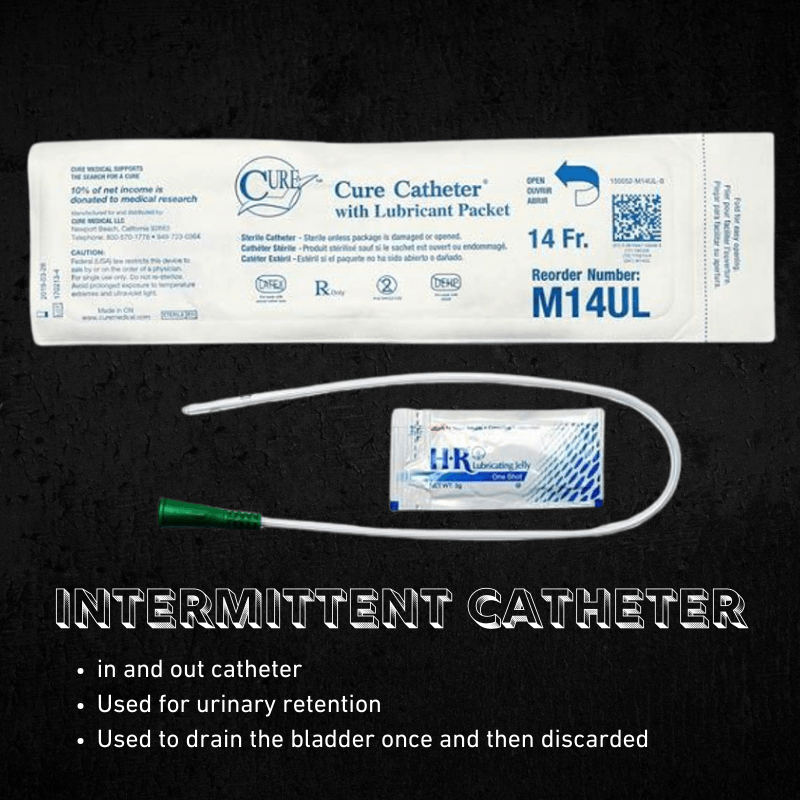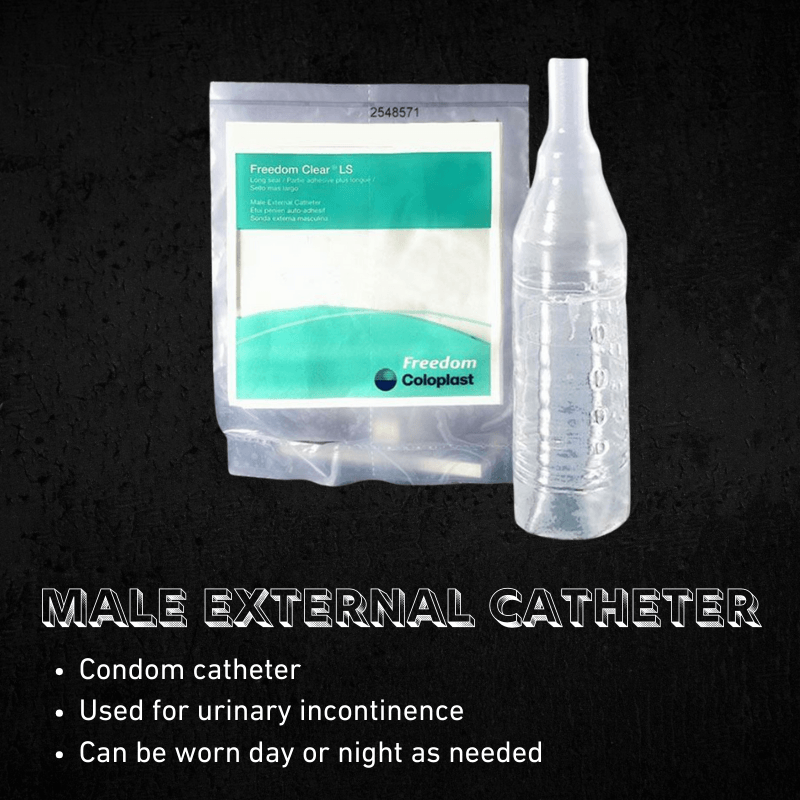The 3 Types of Male Catheters

The 3 Types of Male Catheters: A Complete Guide
For men with urinary issues, catheters provide an essential solution. The type of catheter needed depends on the condition:
- Urinary retention (inability to empty the bladder) requires a Foley catheter or an intermittent catheter.
- Urinary incontinence (involuntary leakage) is managed with an external condom catheter.
Understanding these differences is key to choosing the right catheter for comfort, convenience, and effectiveness.
1. Foley Catheter (Indwelling Catheter) – For Urinary Retention
 A Foley catheter is a flexible tube inserted through the urethra into the bladder. A small balloon at the tip is inflated to keep it in place, allowing continuous urine drainage. It is commonly used when long-term catheterization is required.
A Foley catheter is a flexible tube inserted through the urethra into the bladder. A small balloon at the tip is inflated to keep it in place, allowing continuous urine drainage. It is commonly used when long-term catheterization is required.
Who Should Use a Foley Catheter?
- Men who cannot urinate on their own due to surgery, nerve damage, or medical conditions.
- Patients with chronic urinary retention who need constant bladder drainage.
- Individuals with mobility issues who cannot self-catheterize multiple times per day.
Pros:
- ✔ Suitable for long-term use.
- ✔ Provides continuous drainage, reducing the need for frequent insertions.
- ✔ Can be connected to a leg bag for discreet daytime use.
Cons:
- ✘ Requires professional insertion and removal.
- ✘ Higher risk of urinary tract infections (UTIs) compared to other catheters.
- ✘ Can cause discomfort or bladder spasms over time.
Learn more about Foley catheters
2. Intermittent Catheter (Single-Use Catheter) – For Urinary Retention
 Intermittent catheters are inserted into the bladder when needed to drain urine and then removed immediately. Unlike Foley catheters, they are not left in place, reducing the risk of infections and long-term discomfort. Many men prefer this option because it allows them to control when and how they empty their bladder without relying on continuous drainage.
Intermittent catheters are inserted into the bladder when needed to drain urine and then removed immediately. Unlike Foley catheters, they are not left in place, reducing the risk of infections and long-term discomfort. Many men prefer this option because it allows them to control when and how they empty their bladder without relying on continuous drainage.
Intermittent catheterization is often recommended for men with conditions such as neurogenic bladder, spinal cord injuries, multiple sclerosis, or post-surgical recovery. It is also a good option for those who want to avoid wearing a catheter all the time but still need assistance emptying their bladder completely.
Since these catheters are single-use, they need to be inserted multiple times per day, typically every 4-6 hours, depending on individual fluid intake and bladder capacity. Some variations, such as hydrophilic catheters, come pre-lubricated to reduce friction and make insertion more comfortable.
Who Should Use an Intermittent Catheter?
- Men with urinary retention who can self-catheterize but do not need continuous drainage.
- Patients recovering from surgery or with nerve-related bladder issues.
- Those who prefer an option with a lower infection risk compared to indwelling catheters.
Pros:
- ✔ Lower infection risk since it is not left in place.
- ✔ Offers more independence and flexibility.
- ✔ Available in straight tip, coudé tip, and hydrophilic options for easier insertion.
Cons:
- ✘ Requires multiple insertions per day.
- ✘ May cause urethral irritation with frequent use.
Explore intermittent catheters | Check out hydrophilic catheters | Shop straight catheters | Discover coudé catheters
Check out our guide on choosing an intermittent catheter
3. External Condom Catheter – For Urinary Incontinence
 Unlike Foley and intermittent catheters, an external condom catheter is not used for urinary retention. Instead, it is designed for men who experience urinary incontinence (involuntary leakage). It fits over the penis like a condom and directs urine into a drainage bag. This provides a non-invasive alternative to adult diapers.
Unlike Foley and intermittent catheters, an external condom catheter is not used for urinary retention. Instead, it is designed for men who experience urinary incontinence (involuntary leakage). It fits over the penis like a condom and directs urine into a drainage bag. This provides a non-invasive alternative to adult diapers.
Who Should Use an External Condom Catheter?
- Men with urinary incontinence who experience frequent leakage.
- Those looking for a more comfortable and discreet alternative to adult diapers.
- Patients who do not have urinary retention but need a way to manage uncontrolled urination.
Pros:
- ✔ Non-invasive and more comfortable than internal catheters.
- ✔ Lower risk of urinary tract infections.
- ✔ Easier to apply and remove.
Cons:
- ✘ Can leak if not fitted properly.
- ✘ Not suitable for men with urinary retention.
- ✘ May cause skin irritation if worn for long periods.
Frequently Asked Questions:
What are the main differences between Foley, intermittent, and external catheters?
- Foley catheter: Used for urinary retention; stays in the bladder for continuous drainage.
- Intermittent catheter: Used for urinary retention; inserted only when needed and then removed.
- External condom catheter: Used for urinary incontinence; worn externally to catch urine leakage.
Which catheter is best for long-term use?
Foley catheters and suprapubic catheters are best for long-term use in cases of urinary retention, while external condom catheters are a good long-term solution for urinary incontinence.
How long can a man wear a catheter?
- Foley catheters: Can be worn for weeks but must be replaced regularly.
- Intermittent catheters: Used multiple times per day as needed.
- External condom catheters: Typically changed daily.
For more information on choosing the right catheter, visit our intermittent catheter guide.
Convenient Online Shopping & Automatic Monthly Shipments
Managing urinary health is easier when you have reliable access to the medical supplies you need. At Express Medical Supply, you can shop online for a wide selection of Foley catheters, intermittent catheters, and external condom catheters, along with accessories like drainage bags and lubricating jelly. To make reordering simple, we offer a free Autoship Program, allowing you to receive your medical supplies automatically each month. This ensures you never run out of essential products and eliminates the hassle of manual reordering. Learn more about our Autoship Program and enjoy convenient, stress-free deliveries.
